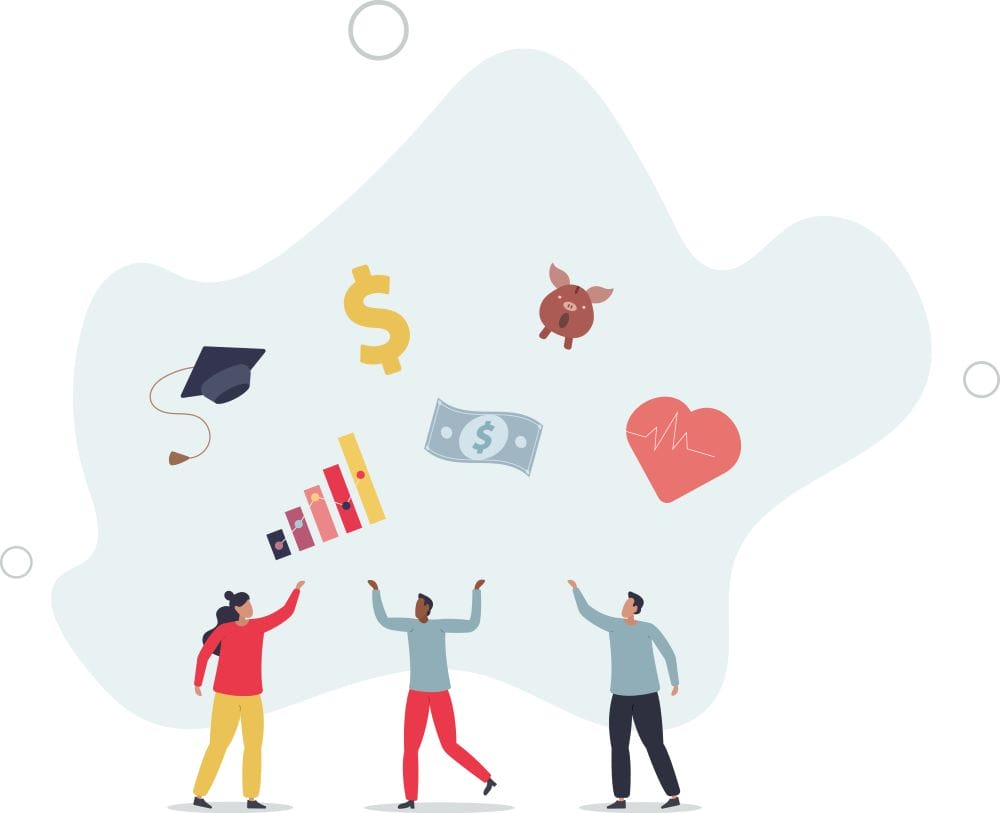Are you looking to boost motivation and retain top talent? Employee recognitions may well be the key. From simple gestures to structured programs, learn how employee recognition can transform your workplace. It may well be the key to employee engagement at your firm in 2025.
In this article, we will discuss employee recognition, digging into who should grant it and how often it should be given. We’ll cover the benefits of employee recognition on workplace culture, and the many ways there are to recognize employees. Then we’ll conclude with some employee recognition program ideas for your team members and suggest how to implement them in your company.
Key Takeaways
- Employee recognition is essential for boosting team morale and engagement, leading to better workplace satisfaction and business outcomes.
- Both formal and informal recognition programs create a culture of appreciation and have significant positive impacts on performance and retention rates.
- To be effective, a company’s recognition program should be personalized, regularly assessed, and aligned with employee preferences to ensure sustained motivation and acknowledgment.
Understanding Employee Recognition
Employee recognition is all about showing your team members that they are valued and respected for their contributions.
While recognition focuses on appreciation and purpose, rewards are the tangible perks for good work. Think of recognition as a heartfelt thank you, and rewards as the cherry on top. Both are crucial, but recognition has a unique power to keep teams motivated and engaged, ultimately enhancing overall workplace satisfaction.
Not a Trivial Matter
Recognition is nothing to scoff at. According to Forbes, recognition could be the key to employee engagement in 2025. Consider shifts in generations and the recognition employees are accustomed to, either at previous jobs, at home, or in other social venues. Focusing on providing the right amount of recognition for your employees can make a major difference in your company’s retention rate and overall success.
The goal of employee recognition is to create a strong bond between employees and the company. When team members feel recognized, their experience improves, thus leading to better business outcomes. Recognition is a major part of maintaining engagement within the workforce. Make employee recognition a vital part of your company’s strategy.
Who Should Recognize Employees?
From managers to peers, every team member has a role to play in making others feel valued. Sharing the importance of this inclusivity can help ensure that recognition is widespread and consistent, fostering a supportive environment.
Leadership plays a crucial role in employee appreciation by ensuring that processes are in place so everyone in the chain of command understands their role in employee recognition.
Peer-to-peer recognition is equally important. It can empower everyone in the organization to regularly show their appreciation to their colleagues. Peer-to-peer recognition won’t generally happen on its own. The right processes, tools, training, and reminders must be in place to provide this type of environment.
Ensuring recognition is sincere and well received is also important. This is part of understanding recognition and knowing your employees’ preferences.
How Often Should Employees Receive Recognition?
How often employees should be recognized depends on the culture as well as the employee. Some experts claim that employees should be recognized frequently, ideally on a weekly or even daily basis to acknowledge their contributions and keep them motivated. Others feel recognition should be saved for the larger accomplishments–that daily recognition isn’t genuine unless the employee has worked for several weeks to reach their goal.
Generations tend to vary in the frequency of recognition that works best for them. According to a Gallup pole, Gen Z and Millennials particularly desire more frequent recognition. It found that nearly four in 10 younger generation employees prefer recognition by their manager at least a few times a week.
The type of job can also play a role in an employee’s need for recognition. An engineer that is highly focused on her work may see frequent recognition as an interruption as opposed to the positive feedback that was intended.
Leaders and managers alike need to be aware of their employees’ recognition needs and respond in a way that helps make the employee feel valued and enjoy working for the company.
How Employee Recognition Improves Workplace Culture

Employee recognition is a powerful tool for transforming workplace culture. When team members feel appreciated and seen, their employee morale can skyrocket. Regular acknowledgment of efforts cultivates a positive environment where employee appreciation is evident, and employee recognition efforts ensure that employees feel valued and motivated to contribute their best.
Recognition fosters collaboration and communication within teams, enhancing their dynamics. Celebrating work anniversaries and team achievements can significantly boost morale and employee engagement. A recognition-rich environment enhances employees’ emotional connection to the organization, making workers more committed and loyal.
Exploring three key areas—boosting confidence, fostering motivation, and building trust—helps to fully understand the impact of recognition on workplace culture.
Boosting Confidence
Recognition is a confidence booster. We all remember that great feeling when we’re acknowledged for our hard work. It develops a sense of confidence and reassurance in our abilities, especially when coming from people that are sincere and don’t always hand out kudos. Well-placed affirmation helps stave off feelings of imposter syndrome, allowing us to feel more secure and capable in our roles.
Embedding recognition into company practices fosters a genuine acknowledgment experience. When employees receive positive feedback for particularly great work, they are more likely to take on new challenges and strive for personal development, knowing their efforts will be recognized and appreciated.
Fostering Motivation
Recognition is a powerful motivator. It clarifies expectations, helping employees understand what is valued by their managers and peers. When employees feel appreciated, they are more connected and engaged within the organization, leading to enhanced performance.
Regular recognition promotes happiness and motivation throughout the workplace. It shows the organization’s commitment to professional development. This not only motivates the acknowledged employee but also sets a standard for success that others are inspired to follow.
Building Trust
Recognition enhances engagement and understanding of company values, which is crucial for building trust between employees and management. When employees feel recognized, it fosters open communication and collaboration, essential for a trustworthy work environment and company culture.
A lack of recognition from managers can hinder rapport and trust, emphasizing the importance of regular acknowledgment. Establishing mutual trust and respect through consistent recognition fosters a supportive and engaging work atmosphere.
Types of Employee Recognition Programs

An employee recognition program may have various forms, each with its unique benefits. The most common types include formal, informal, and peer-to-peer recognition programs. Each type serves a different purpose but collectively, they ensure that recognition is a constant in the workplace.
Successful programs to recognize employees should meet defined effectiveness criteria and align with company values and culture. Effectively recognizing employees involves understanding different approaches and how to implement them within your organization.
Formal Recognition Programs
Formal programs involve structured initiatives like awards or ceremonies. These programs are built into a set structure, and are usually public and recurring events. The events may offer employee of the month awards and service awards, value-based awards, an employee wall of fame, or team player awards.
Formal recognition is typically provided by managers or leadership. It helps promote company values and foster a shared culture. Awards like a leadership award, customer service award, or mentorship award recognize specific qualities and contributions, enhancing a culture of recognition.
Structured recognition not only celebrates individual achievements but also encourages collaboration for the entire team, contributing to a positive and motivated workplace.
Informal Recognition Programs
Informal recognition programs are more spontaneous, allowing for immediate acknowledgment of an employee’s efforts. This can include thank-you notes, verbal acknowledgments, or informal shout-outs in meetings. These gestures, though simple, can be incredibly meaningful and foster a culture of continuous appreciation.
Informal recognition is often more personalized and can be tailored to individual preferences. This makes it a powerful tool to demonstrate appreciation on a day-to-day basis. Helping employees feel appreciated and valued in real-time contributes to a positive and supportive work environment.
Peer-to-Peer Recognition Programs
A peer-to-peer recognition program encourages coworkers to acknowledge other team members’ contributions, enhancing team spirit and unity. These programs ensure more regular feedback among employees, contributing to a positive work environment.
Examples of peer or co-worker recognition programs include the people’s choice award, which is determined by peer voting, or eCards for easy recognition among team members. These tools facilitate convenient and frequent acknowledgment. It is relatively simple to make this employee recognition platform a natural part of the workplace culture.
Studies show that peer recognition can boost individual performance by up to 14%, creating a more productive environment. Creating a culture of recognition from co-workers strengthens relationships among employees and fosters a supportive work environment, ultimately leading to higher engagement and satisfaction.
Benefits of Employee Recognition

There are many benefits to employee recognition. It positively impacts workplace morale and productivity. It enhances individual productivity and loyalty, contributing to higher retention rates. Employees are significantly more likely to excel in their work when they receive recognition.
Consistent recognition contributes to a positive company culture, solidifying company values in an EVP that attracts and retains top talent. Frequent recognition reinforces the value of achievements and boosts morale. Establishing a culture of employee recognition helps motivate employees. This leads to increased engagement, improved performance, and reduced turnover.
Increased Job Satisfaction
Employee recognition greatly enhances job satisfaction. A high percentage of employees feel happier at work when recognized, with 82% reporting increased happiness. Immediate recognition following good performance makes the acknowledgment more meaningful, contributing significantly to job satisfaction.
Specific recognition, tailored to the individual’s actions, enhances the impact of the appreciation and contributes to higher job satisfaction. Employees who receive recognition feel more validated, which enhances their work effort and enthusiasm. They enjoy a more satisfying work experience.
Improved Retention Rates
Employee recognition significantly increases retention by keeping employees engaged and feeling valued. Companies that recognize employee input boast a retention likelihood of 90% among their employees. Organizations with strong recognition cultures see a reduction in employee turnover costs, potentially saving millions annually.
Employees who feel adequately recognized are significantly less likely to consider quitting their jobs, making recognition a powerful tool for improving retention rates.
Enhanced Performance
Regular recognition correlates with improved employee performance levels. Co-worker recognition increases performance by up to 14 percent, showcasing the power of frequent and consistent acknowledgment.
Recent findings from Achievers highlight that regular recognition is a key factor in employee well-being. They also found some interesting information on the frequency of which recognition is given.
The report found that shifting recognition from a quarterly to a monthly basis increased the chances of engagement and productivity by 40%, while boosting job commitment by 25%. Workers who were recognized on a monthly basis or more were three times more likely to be productive, engaged, and loyal compared to those who don’t receive recognition.
Furthermore, the report reveals that employees who specifically receive recognition monthly, rather than quarterly, are 36% more likely to report being productive and engaged, and 22% more likely to feel committed to their job. Clearly, recognition is a key to workplace satisfaction and improved performance.
Effective Employee Recognition Ideas

Effective recognition is a personal issue. It should be based on how each employee prefers to be acknowledged. From thank-you notes to public shout-outs, there are many creative ways to show appreciation.
In this section, we’ll explore some of the best employee recognition ideas. We hope they inspire you to develop a recognition program that fits your company’s culture and values.
Personalized Thank-You Notes and Birthday cards
Thank-you notes and birthday cards are a simple yet powerful way to communicate the value of employees’ contributions and articulate genuine gratitude. Whether handwritten or sent digitally through employee newsletters, thank-you notes provide flexibility in how appreciation is expressed. Birthday cards just let your team member know you recognize the event and wish them a happy day! The key to an effective thank-you note or card is sincerity. Craft your message thoughtfully to ensure it conveys genuine appreciation and makes the recipient feel truly valued.
Social media can be a great tool for recognizing employee birthdays and work anniversaries, thanking them for a job well done, as well as to welcome new hires. This type of recognition can entice the entire time to personally acknowledge the event or welcome the new team member.
When time is of the essence, personalized thank-you notes or cards can be sent in eCards, but enhanced using custom images and text. This added touch makes the recognition feel more special and meaningful. Acknowledging employees’ efforts in a personalized manner helps them feel appreciated and recognized for their hard work to a greater degree than a hum-drum award might.
- PREMIUM QUALITY – each card is printed on a fine and quality heavyweight 80lb cardstock in a smooth finish for durability, consistent print performance and easy to write on; comes with a square flap…
- DIMENSIONS and SPACE – card measures 5” x 7” inches when folded and scored in the middle for neat and hassle-free folding; has enough blank space inside for your personalized messages of gratitude…
Public Acknowledgment
Public acknowledgment is a powerful form of recognition that boosts morale and fosters a sense of community within the organization. Utilizing an ‘Employee Shoutouts’ segment in meetings to acknowledge peer contributions is a great starting point. This can be complemented by company-wide newsfeed announcements to highlight employee achievements.
Encouraging team leaders to recognize standout players at the end of their updates during meetings helps ensure that public recognition is a regular occurrence. Dedicating a section of the company website to showcase specific teams receiving public recognition can further enhance visibility and morale.
Publicly recognizing employees promotes a sense of belonging and shows that their efforts are valued by the entire company, not just their immediate team. Sharing employee accomplishments via newsletters or on social media for public visibility can also amplify the impact of recognition. These methods help create a culture of recognition where everyone feels appreciated and motivated to excel.
People’s Voice Award
Using Webby’s example of a People’s Voice Award, HR departments could create a similar award. The award could be given to an individual based on votes from their peers, essentially signifying the “best” choice in the respective category as determined by popular opinion.
In a work environment, such awards could be created for the team member that:
- Best exemplifies a positive attitude
- Provides outstanding customer service
- Offers innovative ideas
- Significantly contributes to company culture
- Goes above and beyond to make a better situation
Using creativity and your own work environment, a People’s Voice Award can generate excitement, and enthusiasm, contributing to the positive results of both engagement and recognition.
- The Greatest of all time award is for anyone that you think deserves it!
- Our trophies are engraved using a high quality precision laser engraving process.
Rewarding Milestones
Celebrating significant service achievements, such as work anniversaries, is a meaningful way to honor dedication and long-term commitment. Years of service recognition awards can include various gifts. For earlier years of service, a monthly VIP parking spot or company swag in the form of branded water bottles, T-shirts, or even funky socks can spark appreciation.
As an employee’s loyalty increases, offering higher-value awards are generally expected. They might include a custom engraved plaque, custom luggage, or tickets to an entertainment venue which the employee is particularly fond of.
Some companies implement a points-based rewards system, with higher points going to those with higher seniority, or that reached a more significant goal. Employees can choose their preferred reward(s) from a catalog showing the number of points required for each item. This system can be personalized further by allowing employees to select a gift they want and when it is delivered, includes a note from the CEO. This added touch can make the employee experience much more personal and impactful.
Other employee appreciation ideas might include:
- Hosting a private lunch where a superior personally delivers direct gratitude to employees.
- Offering an employee discount program for your company’s products. Employee awards could offer different levels for exceptional employee loyalty, like various discount percentages or a discount on a special product not usually discounted.
- Establish a physical or virtual wall of fame display. It might have photographs, certificates, trophies, or plaques to recognize employee accomplishment.
- Hand out “chamber bucks” for team members that go above and beyond the line of duty.
- Give a logo’d water bottle to everyone who reports a safety issue.
Milestone rewards like the above show appreciation for employees’ hard work and loyalty, motivating a single employee’s contribution or an entire team for their excellent performance.
- PRINT in USA:SMLIXE stainless steel water bottles are personalized and shipped in the USA.You can customized colorful text,logo.The patterns,waterproof and heat resistant stick on cup all life span
- HIGH DEFINITION:Skilled technicians use high-precision machines and eco-friendly inks make out high definition photos on cups allowing you remember your memorable moments.Choose the color and…
Implementing an Employee Recognition Program
Implementing an effective program to recognize employees should involve both employees and management in its development. This will ensure diverse perspectives are included. Creating a recognition committee allows departments to tailor employee recognition strategies by gathering input from various employee groups. This approach ensures that the program is customized and meets the needs of all employees.
Customization of programs is crucial to avoid the pitfalls associated with a one-size-fits-all approach. Frequent recognition helps clarify expectations for employees, enhancing their performance.
Recognition programs must be flexible and fair, accommodating different employee needs and contributions.
Assessing Company Needs
Organizations should consider employees’ core values and preferred recognition methods when implementing a program to recognize them. Knowing how employees prefer to be recognized makes them feel respected and understood. Employee surveys can be used as a method to gather their feedback about recognition preferences to align the program with employees’ expectations.
Understanding employee preferences is key to creating an effective recognition. This approach not only helps tailor our recognition efforts, but also ensures that employees feel genuinely appreciated and valued for their contributions.
Setting Clear Objectives
Defining clear objectives for your employee recognition program is crucial for its success. Specific objectives help identify which aspects of employee performance or behavior are being recognized. This clarity ensures that the recognition program aligns with the company’s values and goals.
Measuring the success of the recognition program against these predefined objectives allows for continuous improvement. Measuring factors that show an increase in engagement, enhanced employee motivation, job satisfaction, and overall well being as a result of the new program may well mean the committee should be given employee awards!
Overall, by setting and communicating clear objectives, organizations can create a more focused and effective recognition program, providing an optimal employee experience.
Regular Review and Adaptation
Regular evaluations ensure that recognition programs remain relevant and highlight areas for improvement. Regularly seek feedback from employees to sustain and enhance your program. This continuous loop of feedback and adaptation keeps the program dynamic and effective.
Gathering and acting on employee feedback is crucial for the ongoing success of the recognition program. This approach helps refine the program and demonstrates to employees that their opinions are valued.
Summary
Employee recognition is a powerful tool for enhancing job satisfaction, motivation, and performance. By understanding the different types of recognition programs and implementing them effectively, organizations can create a positive company culture where employees feel valued and appreciated.
Start recognizing your employees today and witness the positive impact on your organization’s morale and performance.
As an Amazon Associate, The Job Blog earns from qualifying purchases. Last update on 2025-03-29 / Affiliate links / Images from Amazon Product Advertising API





